Let’s be honest — our homes can get loud, even when they’re quiet. It’s not the sound; it’s the stuff. Piles of papers, too many knick-knacks, mismatched colors fighting for attention — it all adds up to a kind of mental noise.
Minimalist home decor isn’t just about owning less; it’s about living better with less. It’s calm, intentional, and honestly kind of freeing once you get the hang of it. And the best part? You don’t need to throw everything out or live in a white box.
Minimalism isn’t about emptiness — it’s about space. It’s about breathing room. About choosing things you actually love and letting them stand out instead of getting buried.
So if your home’s been feeling a little too crowded or visually busy lately, here are 11 minimalist home decor ideas that’ll help you create a space that feels calm, grounded, and beautifully simple.
1. Start With a Soft, Neutral Base
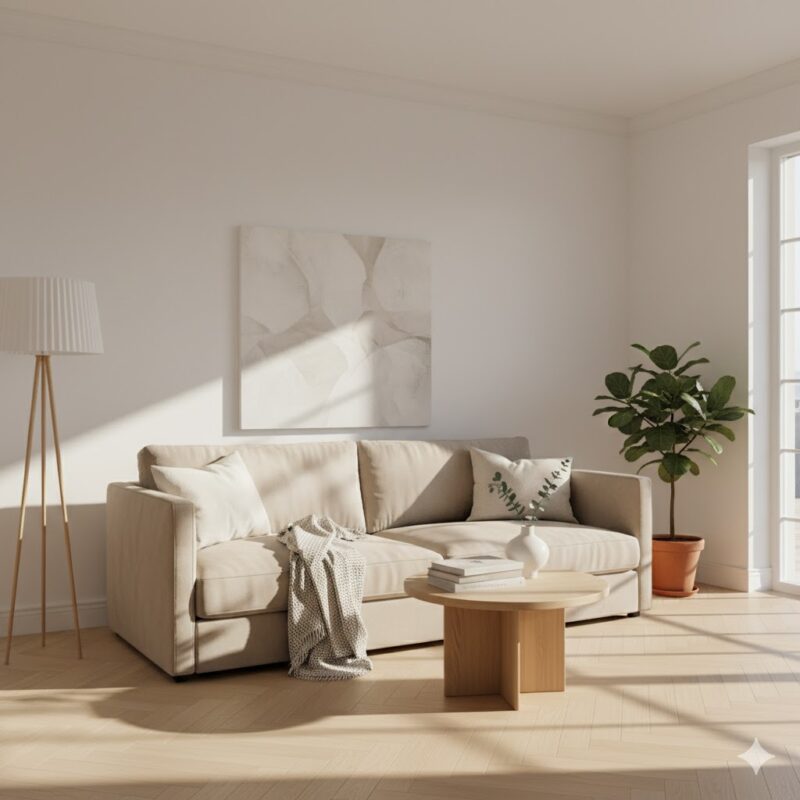
If minimalism had a foundation, it would be neutrals. They’re the quiet heroes of calm spaces.
Think whites, beiges, soft grays, muted taupes — the kind of tones that don’t shout but whisper. They create visual harmony and give your eyes a place to rest.
A neutral base also makes everything else easier. Whether you want to add a splash of color later or keep it serene, the background stays timeless.
And it doesn’t need to be sterile. Warm neutrals — like ivory, oatmeal, or greige — add softness while still keeping that minimalist clarity.
When in doubt, picture how sunlight falls across natural tones. That’s the vibe you’re going for.
2. Declutter With Intention, Not Pressure
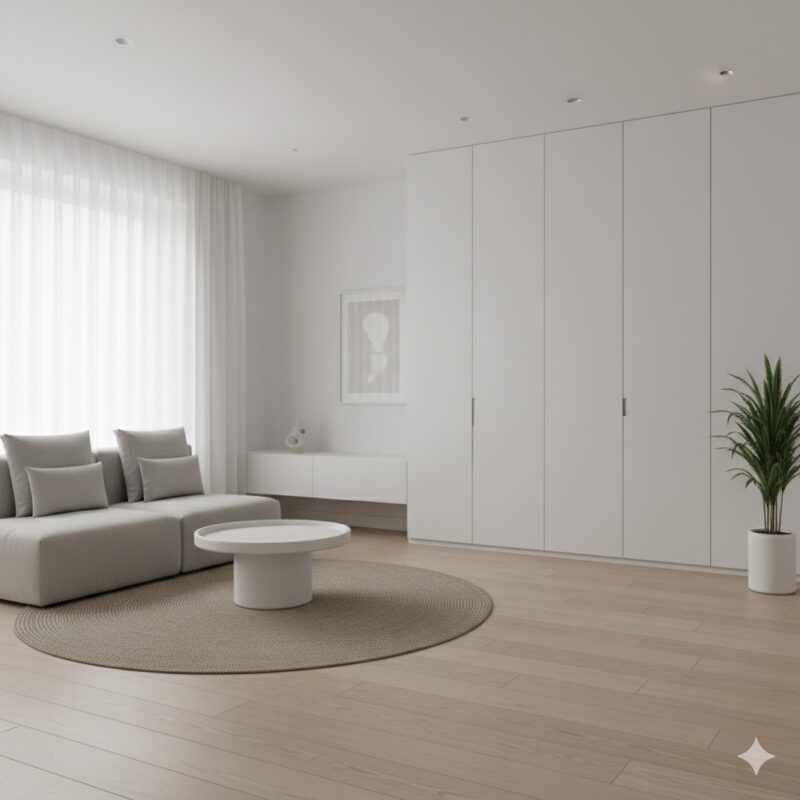
Decluttering can feel like a chore, but it’s really more like editing your life — keeping only what adds value or beauty.
Don’t force yourself into extreme minimalism overnight. Just pick one space — maybe your coffee table or a single shelf — and clear it out.
Ask yourself: Do I use this? Does it make me happy? If not, thank it (yes, that Marie Kondo thing actually helps) and let it go.
Minimalism works best when it feels gentle, not like punishment. You’re not stripping your home bare — you’re curating it.
Every cleared surface gives your mind a tiny sigh of relief. You’ll start to crave that quiet space more than the clutter you used to keep.
3. Choose Quality Over Quantity
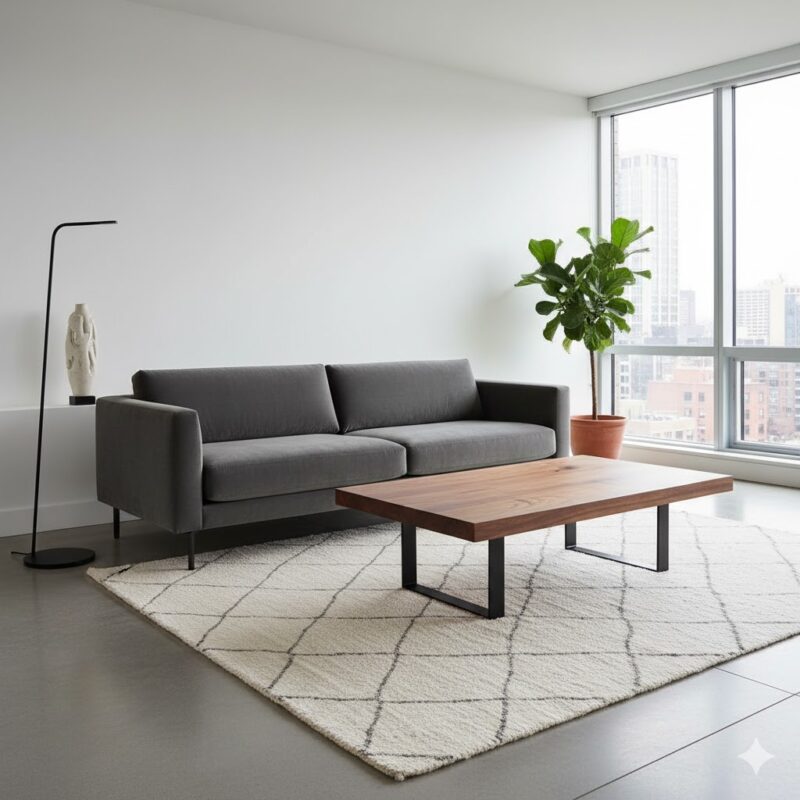
Minimalism doesn’t mean “cheap.” Actually, it’s kind of the opposite.
When you have fewer things, each one matters more — so choose pieces that’ll last. A well-made sofa, a sturdy wooden table, a handmade ceramic vase — these are worth investing in because they stay with you.
I used to buy decor just to fill space. Now, I wait. I save up for pieces that feel like “yes, this belongs here.”
You’ll find you don’t need much — just the right things.
A single beautiful object on an empty shelf can say more than ten mediocre ones ever could.
4. Add Warmth Through Texture
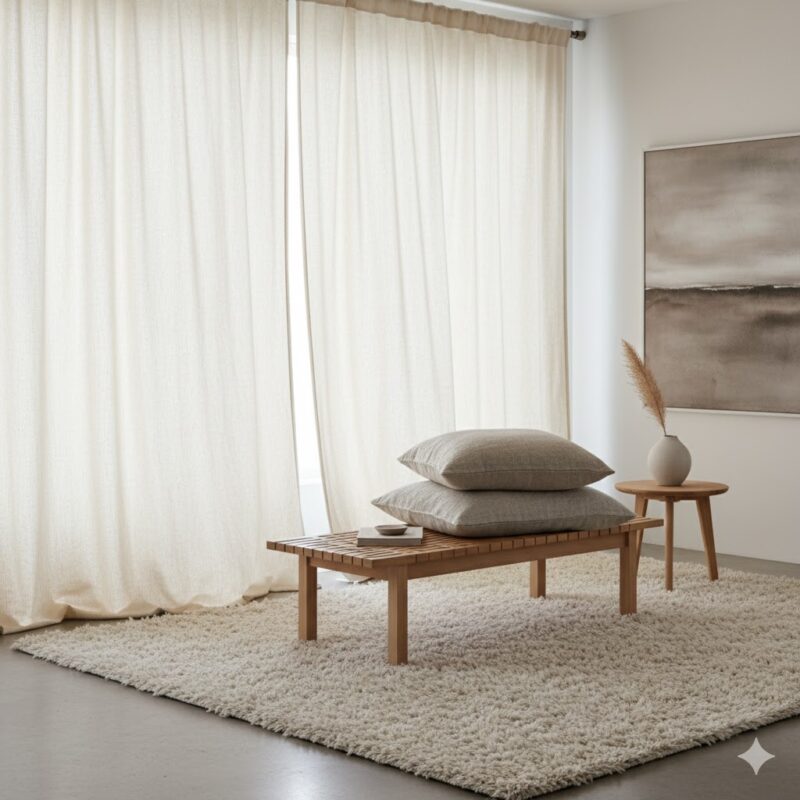
A lot of people hear “minimalism” and imagine cold, empty rooms — but that’s only half the story. Warmth comes from texture.
Mix materials: a linen curtain next to a wooden chair, a woven rug under a glass coffee table, a ceramic lamp on a marble tray. The contrast keeps the space from feeling flat.
Textures catch light differently too, which adds depth without needing extra “stuff.”
It’s a quiet way to make your minimalist home feel human — soft edges, subtle imperfections, warmth you can touch.
5. Simplify Your Color Palette
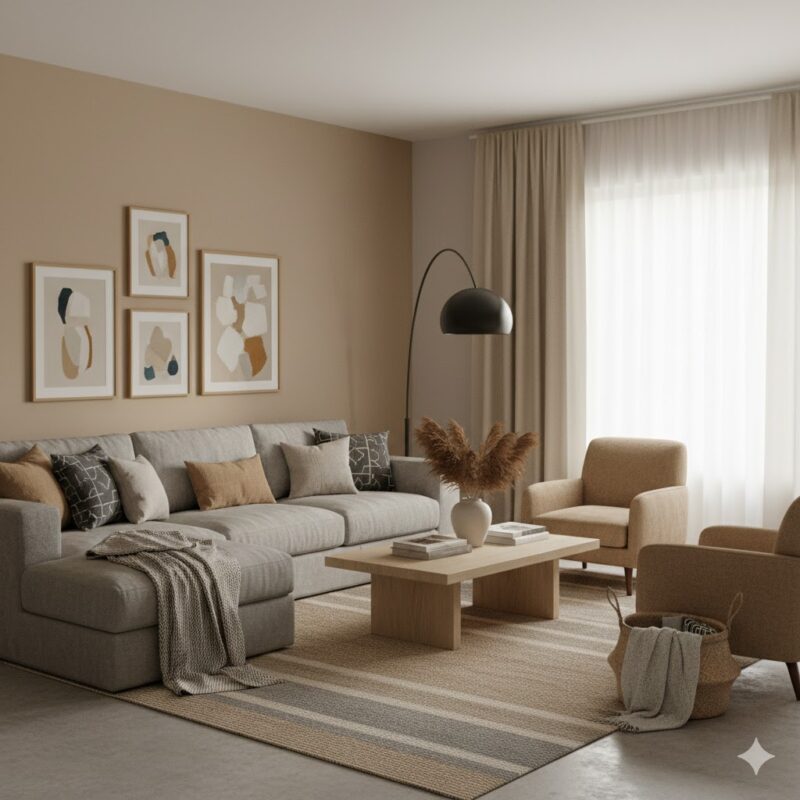
Color can overwhelm fast. Keeping a tight palette helps everything flow.
Choose two or three main tones — maybe white, sand, and soft charcoal — and stick with them. If you want a pop of color, let it come from nature: a plant, a warm wood grain, a muted rust throw.
Monochrome doesn’t mean boring. It’s peaceful. It gives the eye a rest, and suddenly small details — like a ceramic bowl or a woven blanket — stand out beautifully.
It’s like your home finally learns how to whisper instead of shout.
6. Hide Clutter (Smart Storage Is Key)
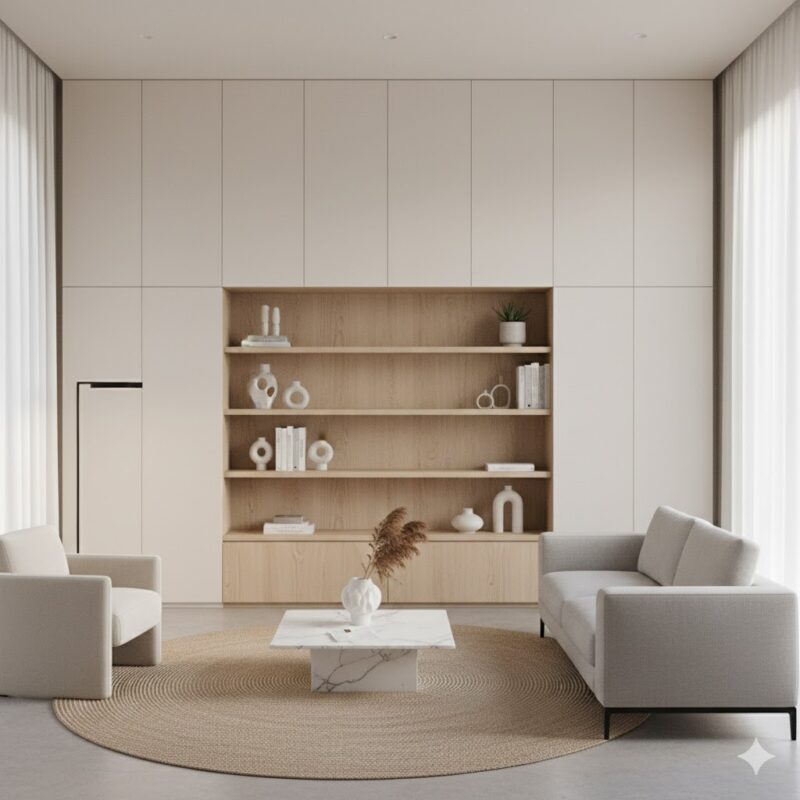
Even minimalist homes have stuff — the trick is keeping it out of sight.
Closed storage saves the aesthetic. Choose furniture that doubles up: benches with lids, beds with drawers, floating cabinets that look sleek but hold plenty.
Baskets are lifesavers too. Natural woven ones blend right in and keep things tidy without ruining the look.
The goal isn’t to own nothing — it’s to make your home look and feel spacious, even when real life is happening.
Minimalism thrives on visual calm. The fewer distractions your eyes catch, the more grounded you’ll feel.
7. Let Natural Light Do the Work
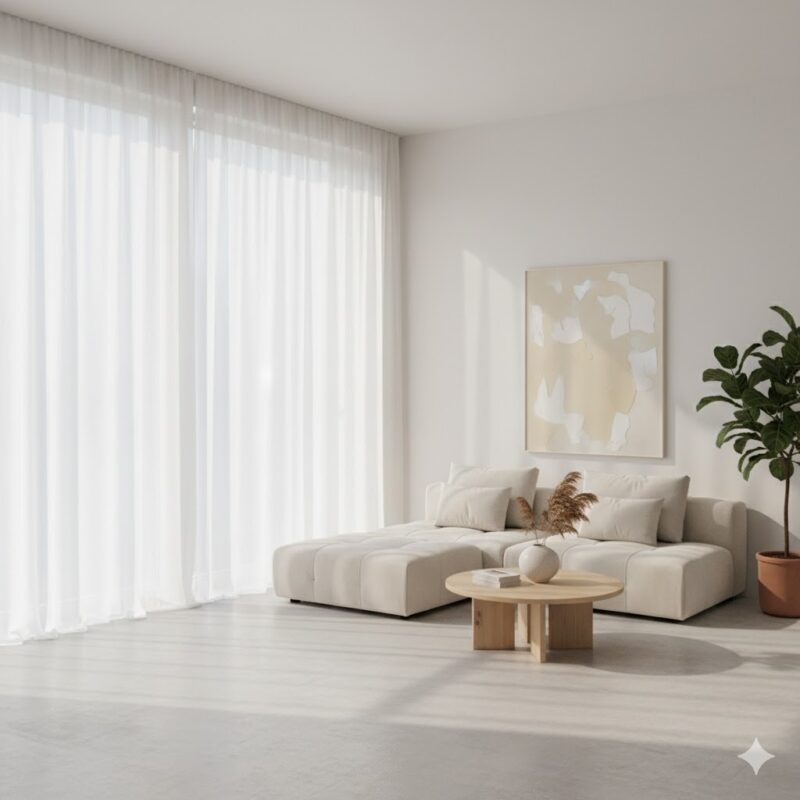
There’s something deeply calming about natural light. It changes everything — even a plain room feels alive when the sun touches it.
Open your windows as much as you can. Use sheer curtains or blinds that let light filter softly through.
If your room doesn’t get much sun, add mirrors to bounce what you do have around. Place one across from a window, and you’ll instantly double your brightness.
You’ll notice how your mood shifts too — less artificial light makes evenings gentler, mornings fresher.
It’s like your space starts breathing with you.
8. Add Greenery for Life and Balance
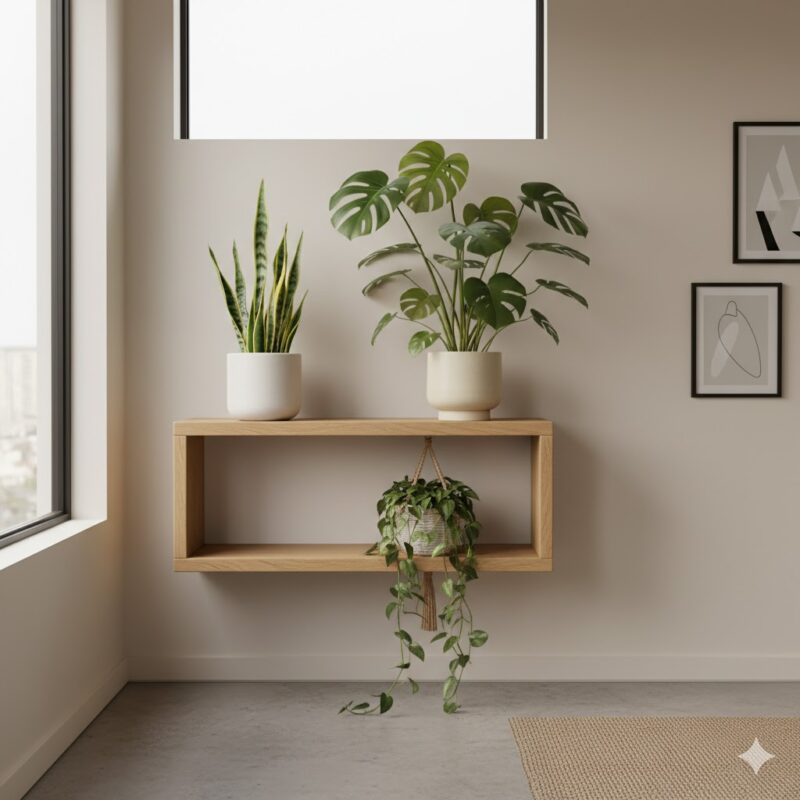
Even minimalist spaces need a touch of life — and nothing does that better than plants.
Choose a few (not a jungle) and give them room to breathe. A big leafy monstera in one corner or a snake plant beside the sofa might be all you need.
They break up all the clean lines with something organic and unpredictable. That contrast — the wild next to the orderly — makes the room feel alive.
And if you’re someone who forgets to water things (like me sometimes), faux plants work fine. Minimalism is about ease, not guilt.
9. Keep Surfaces Clear but Not Empty
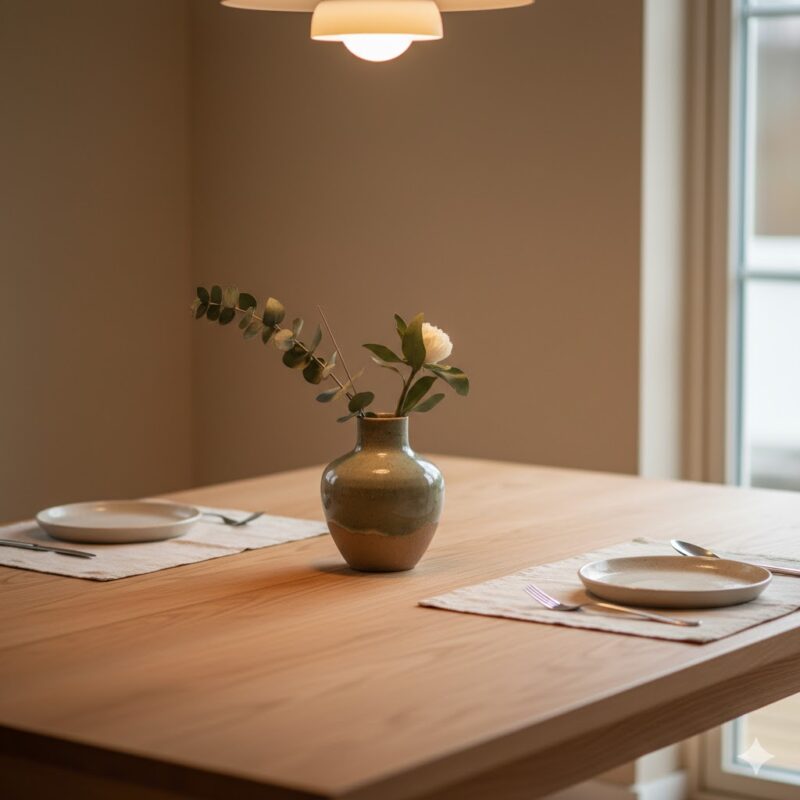
The difference between calm and cold is subtle — clear doesn’t have to mean bare.
Keep only what feels essential or beautiful on each surface. Maybe a small candle, a single vase with fresh flowers, or a bowl that holds your keys and nothing else.
It’s okay to leave some space — that’s kind of the point.
The emptiness lets each object breathe, gives it meaning. When you walk into the room, your eyes settle instead of darting around. That’s where the peace comes from.
10. Focus on Clean Lines and Simple Shapes
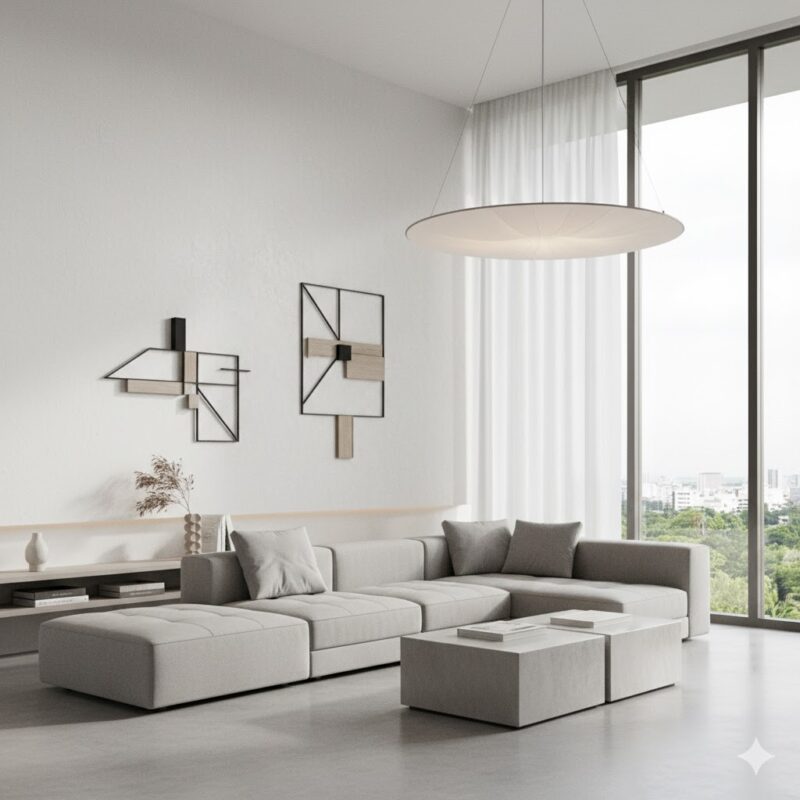
Minimalist decor celebrates the beauty of simplicity — clean edges, functional forms, nothing extra.
Avoid furniture that’s overly ornate or fussy. Instead, look for pieces that feel balanced — a low-profile sofa, a round table with tapered legs, or simple open shelving.
There’s something timeless about geometric shapes and symmetry. They give structure without noise.
Sometimes, I’ll rearrange a room just to find that sweet visual balance — when everything feels aligned and intentional, but still soft.
11. Create Calm Through Scent and Sound
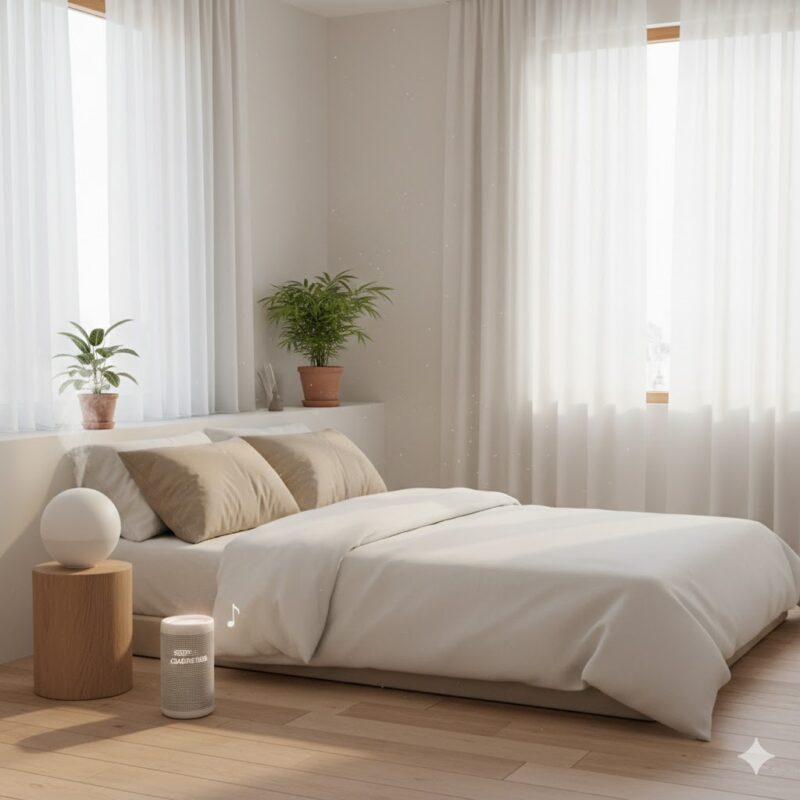
Minimalism isn’t only what you see — it’s also what you feel.
Soft background music, an essential oil diffuser, or the subtle crackle of a candle can complete the atmosphere.
Scents like sandalwood, bergamot, or cedarwood evoke calm. Try running a diffuser in the morning while you tidy up — it sets the tone for the day.
And sound matters too. Maybe a quiet playlist, or even silence if that’s your version of peace.
Minimalism is sensory balance. Fewer things, but all of them chosen with care.
Finding Peace in the Quiet
Here’s the truth — minimalism isn’t a trend, it’s a mindset. It’s learning to live with enough.
When you start letting go of the excess, you realize how much space you’ve been missing — in your home, in your head, even in your schedule.
Minimalist decor doesn’t ask for perfection. There’s no checklist, no right number of chairs or candles. It’s just about finding the point where your home starts to feel like a deep breath again.
So, clear a surface. Let the light in. Pick things that mean something and skip the rest.
You’ll find calm doesn’t come from what you add — it comes from what you allow to stay.